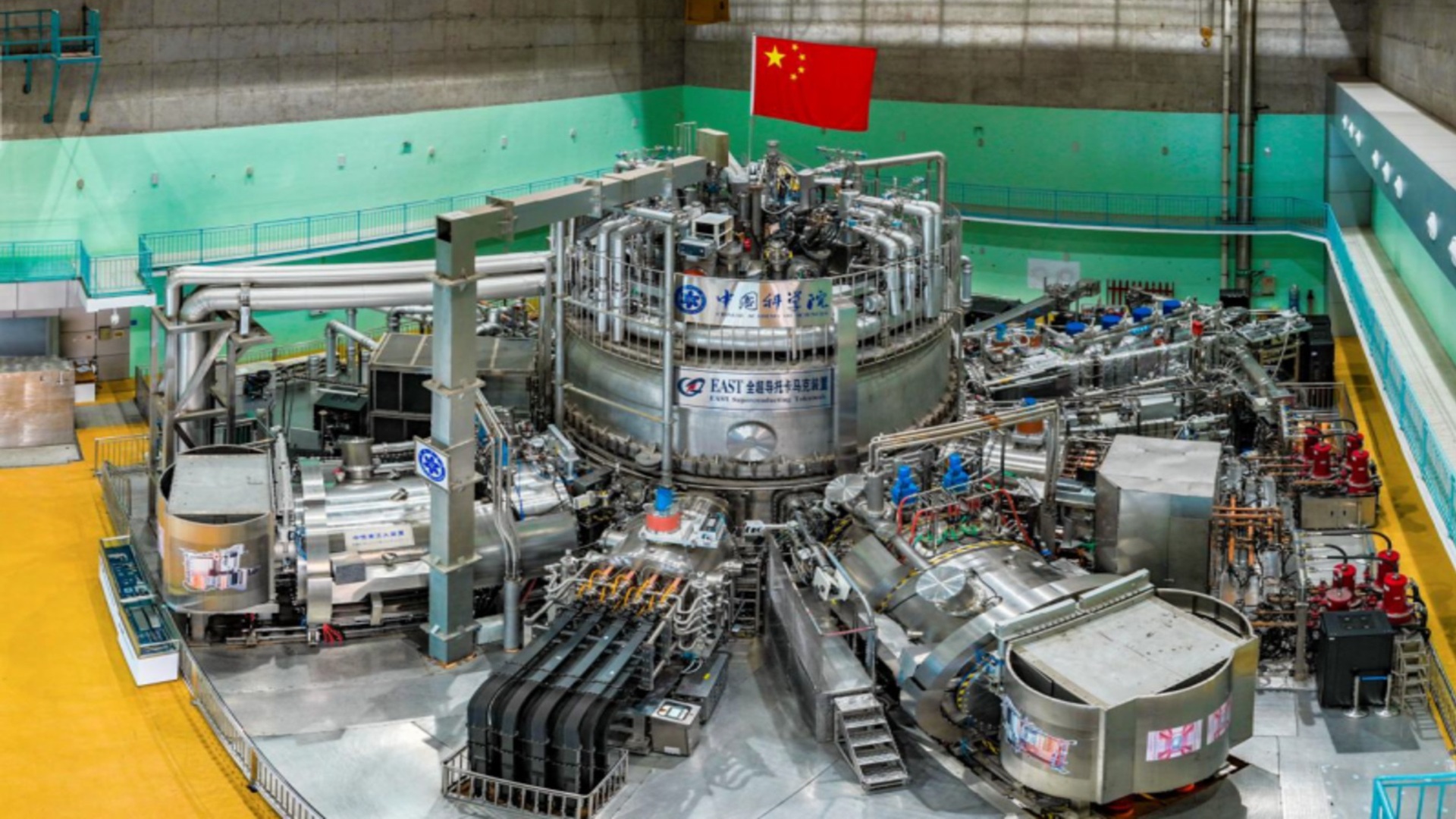China’s ‘artificial sun’ design could boost nuclear fusion power, engineers say
Scientists testing China’s trillion-dollar ‘artificial sun’ have underlined its potential to advance nuclear fusion, emphasizing that it could greatly improve steady-state, long-pulse, and high-capacity tokamak operation.
The Experimental Advanced Superconducting Tokamak (EAST), also known as China’s artificial sun’ or HT-7U (Hefei Tokamak 7 Upgrade), is an experimental superconducting tokamak magnetic fusion energy reactor that began its operations in 2006.
Managed by the Institute of Plasma Physics (IPP) of the Chinese Academy of Sciences, the EAST is a critical project for magnetic confinement fusion and has achieved significant scientific milestones.
Earlier this year, at the Hefei Comprehensive National Science Center, the EAST set a new world record and paved the way ahead in the pursuit of limitless, clean fusion energy.
It successfully achieved steady-state, long-pulse H-mode plasma operations at temperatures above 100 million degrees Celsius (180 million degrees Fahrenheit) for 1,066 seconds.
Now, as part of a new research, the EAST team showed that the world’s first fully superconducting non-circular tokamak significantly improves steady-state, long-pulse, and high-performance operation.
They claimed the findings open the door to sustainable fusion energy and offer crucial proof that advanced tokamak designs can move the technology closer to practical use.
Record-setting plasma run
The research team, led by Jianwen Yah, PhD, from the Institute of Energy at the Hefei Comprehensive National Science Center, noted that traditional sources face both increasing challenges in environmental protection and resource stability.
Meanwhile, controlled nuclear fusion, as a potential solution to address long-term energy needs, has attracted widespread attention from the international scientific community.
With the rising global demand for clean energy, the team stressed that tokamaks are vital to fusion, yet sustaining steady-state, high-parameter, long-pulse operation in fully superconducting designs remains a major challenge.
To address these challenges, the Institute of Energy carried out research on the steady-state operation performance of China’s USD one-trillion ‘artificial sun’ fusion reactor.
For the research, the institute collaborated with the Hefei Institutes of Physical Science, the Institute of Plasma Physics of the Chinese Academy of Sciences, as well as several universities, research institutions, and enterprises.
Together, the group of experts explored the structural design, technical hurdles and steady-state operation performance of the EAST design. The experiment provided important experimental data and technical support through long-term operation tests and physical research.
Artificial sun breakthrough
Tokamaks are donut-shaped devices that use powerful magnetic fields to contain plasma, which is a superheated state of matter where fusion can occur. Reaching and maintaining fusion conditions requires pushing engineering limits, especially when dealing with temperatures over six times hotter than the core of the sun.
The results showed that EAST, the world’s first fully superconducting non-circular tokamak, greatly improves steady-state, long-pulse, high-parameter operation. They confirmed that such conditions are not only possible but increasingly achievable under controlled settings.

The team managed to achieve a steady-state H-mode plasma at temperatures exceeding 100 million degrees Celsius (180 million degrees Fahrenheit), which is a high-confinement regime essential for practical energy input. They also sustained it for 17 minutes and 46 seconds, setting a new world record in January 2025.
“This achievement not only verifies the feasibility of steady-state operation for fusion reactors but also marks a major turning point in fusion research from basic scientific exploration to engineering practice, which has important scientific significance and engineering application value for promoting the development of global nuclear fusion energy,” the researchers said in a press release.
Source: Interesting Engineering
World’s first living cement can store electricity and power buildings from within
China’s ‘artificial sun’ design could boost nuclear fusion power, engineers say

